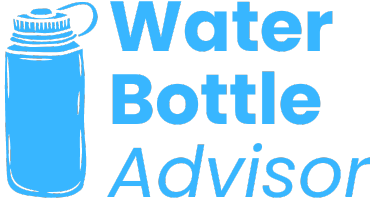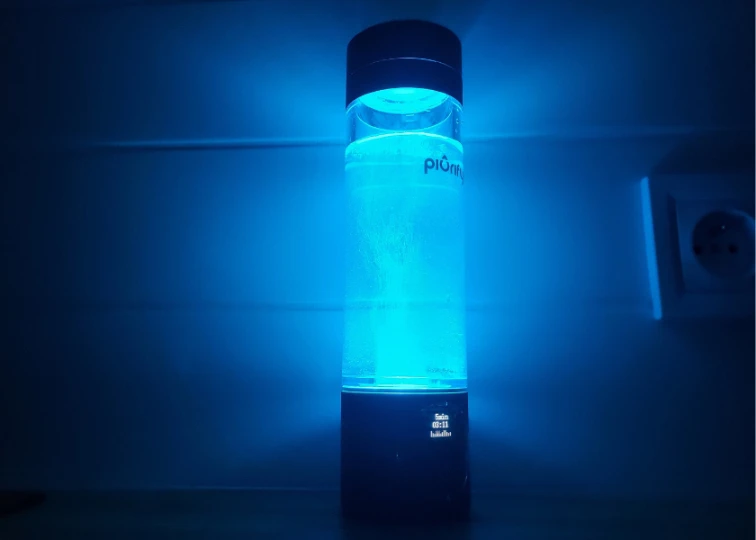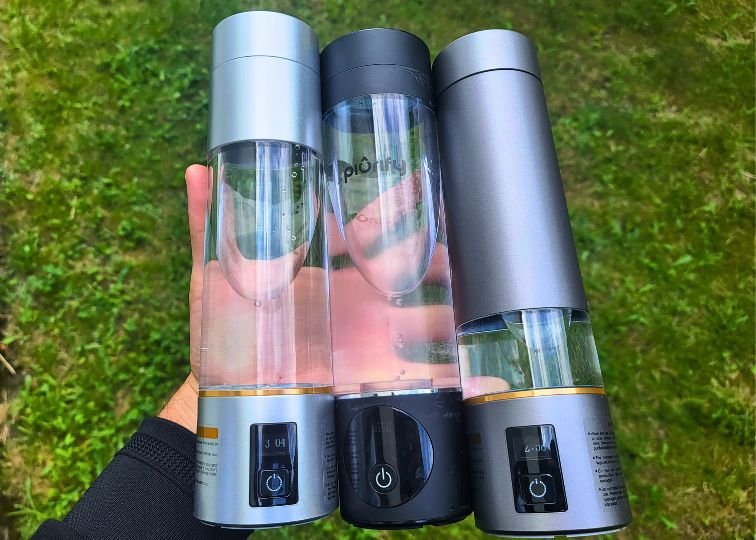If I were to compare tumblers and water bottles a decade ago, it wouldn’t even be much of a contest, because bottles clearly ruled the drinkware world. Tumblers were still a niche, relatively unknown option, while bottles were everywhere.
But fast forward to around 2019, and everything started to change. That’s when Stanley burst onto the scene, igniting what can only be called a tumbler frenzy. Their meteoric rise from $70 million in annual revenue in 2019 to a staggering $750 million by 2023 shows just how much tumblers have captured people’s attention.
So, do tumblers really threaten the long-standing dominance of reusable bottles? Can they dethrone bottles when it comes to key features like insulation, durability, and portability? Having used both daily for years, I’ve gathered some insights that I’ll share in this guide.
Some of the links on this page are affiliate links. This means that if you click on one of the links and make a purchase, I may earn a small commission at no additional cost to you.
The Coldest Tumbler | Hydro Flask |
|---|---|
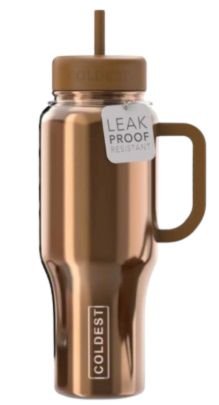 | 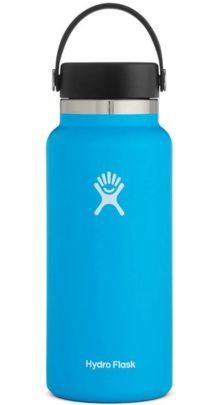 |
My most recommended tumbler | My most recommended water bottle |
Tumblers Pros: Why Are Tumblers So Popular?
It feels like tumblers exploded onto the scene overnight, and that’s because they’ve nailed a few key features that make them incredibly appealing for modern life.
The car commute hero
Car cup holder compatibility is the tumbler’s killer feature. Most tumblers, even the bigger 40-ounce ones, are designed with a tapered base. With the average car cup holder being about 3 inches in diameter, that slim bottom slides right in perfectly. If you spend a lot of time in your car, this is perfect. But if you don’t, this feature might not dazzle you as much.
Seriously good insulation
The best stainless steel tumblers have insulation that’s easily on par with top-tier bottles. We’re talking about the gold standard double-wall vacuum insulation, and sometimes even triple-wall. Your iced coffee stays cold for 24 hours and your tea can stay warm for up to 12. That’s some serious performance.
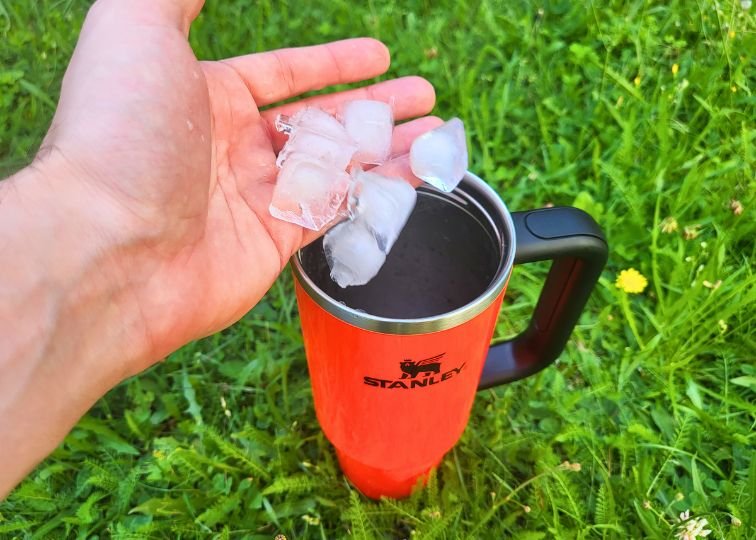
A handle on things
Many tumblers, especially the larger sizes, come with a side handle. This might seem like a small detail, but it’s an obvious plus for portability. Let’s be real, trying to grip a massive, condensation-slicked cup isn’t the most comfortable experience. The handle is a feature most bottles just don’t offer, making the tumbler surprisingly easy to carry around the house or office. The comfort can vary, of course. Some feel perfectly molded to your hand, others not so much. But it’s a welcome addition.
More than just a cup
I’d be lying if I said aesthetics didn’t matter. The sheer variety of colors and designs is a huge part of the tumbler’s popularity. Shopping for one can feel like walking into a candy shop, with endless options to match your personal style. While I prioritize performance, it’s hard to deny the appeal of a tumbler.

Tumblers: Cons
For one, most of them are not truly leak-proof. Out of the half-dozen tumblers I use most often, I’d only trust two of them to be tossed in a bag. The rest are splash-proof or spill-proof at best. It all comes down to the lid. The straw lid is king in the tumbler world, but not every design includes a way to securely fold or cover it. This is why I absolutely admire the rare tumblers that are 100% leak-proof, but you have to specifically hunt for them. If you want to know which ones I use, see my best tumblers ranking.
Then there’s the issue of limited hot liquid compatibility. I know I just praised their insulation, but not all tumblers are built for steaming hot beverages. Using one with your morning coffee could damage it if it’s not rated for high temperatures. It’s a feature you really need to pay attention to when buying. A tumbler that can handle both hot and cold liquids is a true year-round companion, and believe me, that’s incredibly helpful.
This brings me to my final point: they can be less versatile than bottles. This really depends on your lifestyle, but for me, taking a tumbler on a hike feels almost impossible. Think about it – have you ever seen a hiker sipping from a 40 oz. tumbler on a trail? I haven’t. They all carry sleek, lightweight bottles. Tumblers are fantastic for the office, the car, or lounging on the patio, but they aren’t always the right choice for more active situations.
Bottles: Pros
With the tumbler’s rise, it’s easy to forget why bottles have been our go-to for so long. They still hold some major advantages.
Their biggest strength? Leak-proof designs. Unlike the gamble you take with many tumblers, most bottles I’ve owned are practically fortress-like against spills. They feature ingenious mechanisms to prevent leaks. For example, my Owala FreeSip has a button you press to open the lid, with a handle that swings over to lock it. Pure genius. This gives you the confidence to throw it in your backpack next to your laptop.
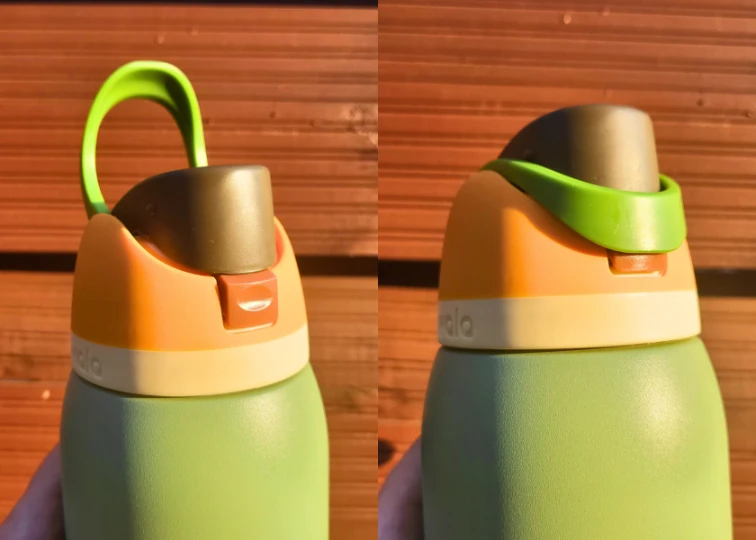
Bottles are also incredibly versatile for any activity. While tumblers shine in specific scenarios, you can take a bottle almost anywhere. Hiking, biking, the gym, a flight – you name it, a bottle fits right in. In some cases, like a dusty trail, you’ll be actively thankful you chose a bottle over a tumbler with an exposed straw. Of course, a massive 128 oz jug isn’t going on a plane (that would be a sight), but most standard sizes (up to 40 oz) are ready for anything.
Thanks to their thick double walls with vacuum insulation, premium bottles offer excellent temperature retention. While tumblers can keep drinks cold for over 24 hours with ice, high-end bottles like my favorite Hydro Flask can stretch that to 2 or even 3 days — which still amazes me every time. And don’t forget that many insulated stainless steel bottles are hot and cold ready. This boosts their versatility even further, making them a true year-round investment. It’s satisfying to own one reliable container for ice-cold water in July and piping hot tea in December.
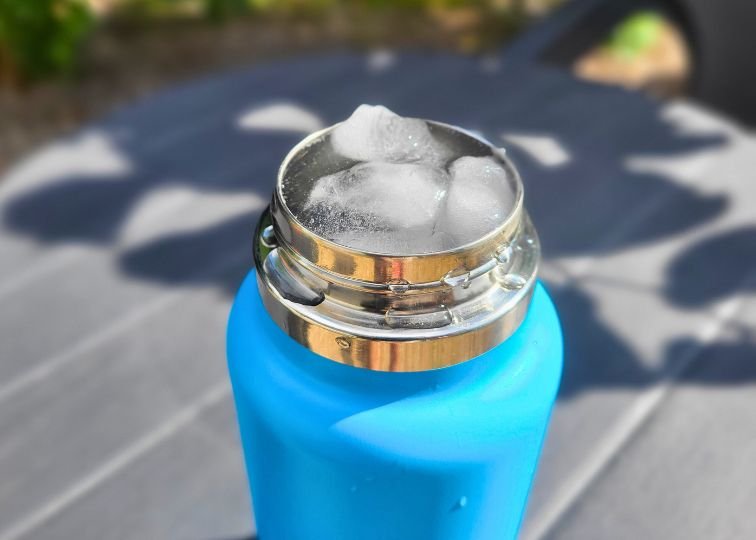
Finally, bottles are often built to last. They are designed for movement. Manufacturers know they’ll be clipped to backpacks, dropped at the gym, and generally knocked around. Because of this, they tend to have a more secure construction. The typically narrower, uniform shape of a bottle is structurally stronger than the wider, top-heavy design of a tumbler, which can be more prone to dents. To be fair, some tumblers are incredibly tough, but as a whole, bottles feel like they were born for a bit of rough-and-tumble.
Bottles: Cons
No product is without its downsides. The most glaring one for bottles is the cup holder challenge. It’s surprisingly hard to find a bottle with a decent capacity that still fits in a standard car cup holder. Smaller ones, maybe up to 20 ounces, might slide in, but if you need more hydration, you often have to buy a special adjustable car cup holder.
And while some brands offer stylish options, bottles generally lean more toward function than fashion. The marketplace just doesn’t have that “kid in a candy store” feeling you get with tumblers.
When to Use Each One
While both tumblers and reusable water bottles serve the same general purpose (keeping you hydrated, obviously) they each excel in different scenarios. Depending on where you are and what you’re doing, one might prove significantly more practical or comfortable than the other.
Below, I’ve put together a list of everyday situations and matched them with the drinkware option that fits best.
| Place / Situation | Better Option | Reason |
| Car / Driving | Tumbler | Fits cup holders, easy sipping, spill-resistant lids |
| Office / Desk | Tumbler | Stylish, great for hot/cold drinks, professional look |
| Gym / Workout | Water Bottle | Durable, leak-proof, easy to carry during exercise |
| Hiking / Outdoors | Water Bottle | Lightweight, rugged, good insulation for long trips |
| Airplane / Travel | Water Bottle | Leak-proof, compact, easy to refill |
| Cafe / Coffee Shop | Tumbler | Trendy, great for hot drinks |
| Cycling / Running | Water Bottle | Designed for quick one-hand use, fits bike holders |
| Beach / Poolside | Water Bottle | Durable, secure lid, larger capacity (up to 128 oz) |
| Commuting (bus/train) | Tumbler | Fits cup holders, easy access, stylish |
| Kids / School Lunchbox | Water Bottle | Durable, spill-proof, easy for kids to use |
What Are the Most Popular Tumbler & Bottle Brands?
When it comes to tumblers, there’s a handful of brands that stand out. But it’s Stanley who wears the crown. It’s not just popular; it’s a full-blown obsession for some people. I came across a survey that revealed 47% of Stanley cup users feel emotionally attached to their tumbler.
At first, I thought that was a bit much. I mean, it’s just a cup, right? But then I bought one. And suddenly, I got it. The soft pastel colors, the satisfying handle, the quirky but elegant design. It somehow becomes part of your daily routine before you even realize it.
Still, Stanley doesn’t own the space entirely. Brands like Hydro Flask, YETI, and Owala are also huge players in the tumbler world. I’d call these the “core four”. If you spot someone walking down the street with a stylish drink in hand, chances are it’s one of those.

Reusable bottles are a little trickier to rank. Different surveys highlight different leaders. There’s no clear-cut winner, but some names keep showing up. YETI, Hydro Flask, Owala, Stanley, S’well, CamelBak, Nalgene, Contigo, and Klean Kanteen – these are the heavyweights. They’re all high-quality, and I’ve used most of them over the years depending on what I needed that day.
If you’re curious which ones truly impressed me, take a look at my ranking of the best reusable water bottles based on personal experience.
My Verdict: What Do I Prefer More?
I do like both tumblers and bottles, but bottles definitely have a special place in my daily routine. Tumblers are great for looking stylish and are super handy for sipping on the go, especially while driving. Still, when it comes to overall usefulness and versatility, bottles come out on top for me.
Take my favorite Hydro Flask 32 oz – it works just as well on a hiking trip as it does at the office. That kind of flexibility is what I really appreciate, and so far, no tumbler I own matches it. But who knows? Drinkware trends keep changing, and maybe one day tumblers will catch up. If that happens, I’ll be sure to share!
The Coldest Tumbler | Hydro Flask |
|---|---|
 |  |
My most recommended tumbler | My most recommended water bottle |
Sources
https://blog.customink.com/emotional-support-water-bottles/
https://time.com/6978931/stanley-cups

Jeremiah Kowalski
Hey there! I’m Jeremiah, the guy behind WaterBottleAdvisor.com. I used to have a bad habit of guzzling sodas while working remotely, but thanks to reusable water bottles, I’ve turned my hydration game around. After testing over 50 bottles, I’m here to help you find the perfect one to make staying hydrated a joy, not a chore. When I’m not reviewing bottles, you’ll likely find me scaling steep trails around the world, trusty water bottle in hand.
